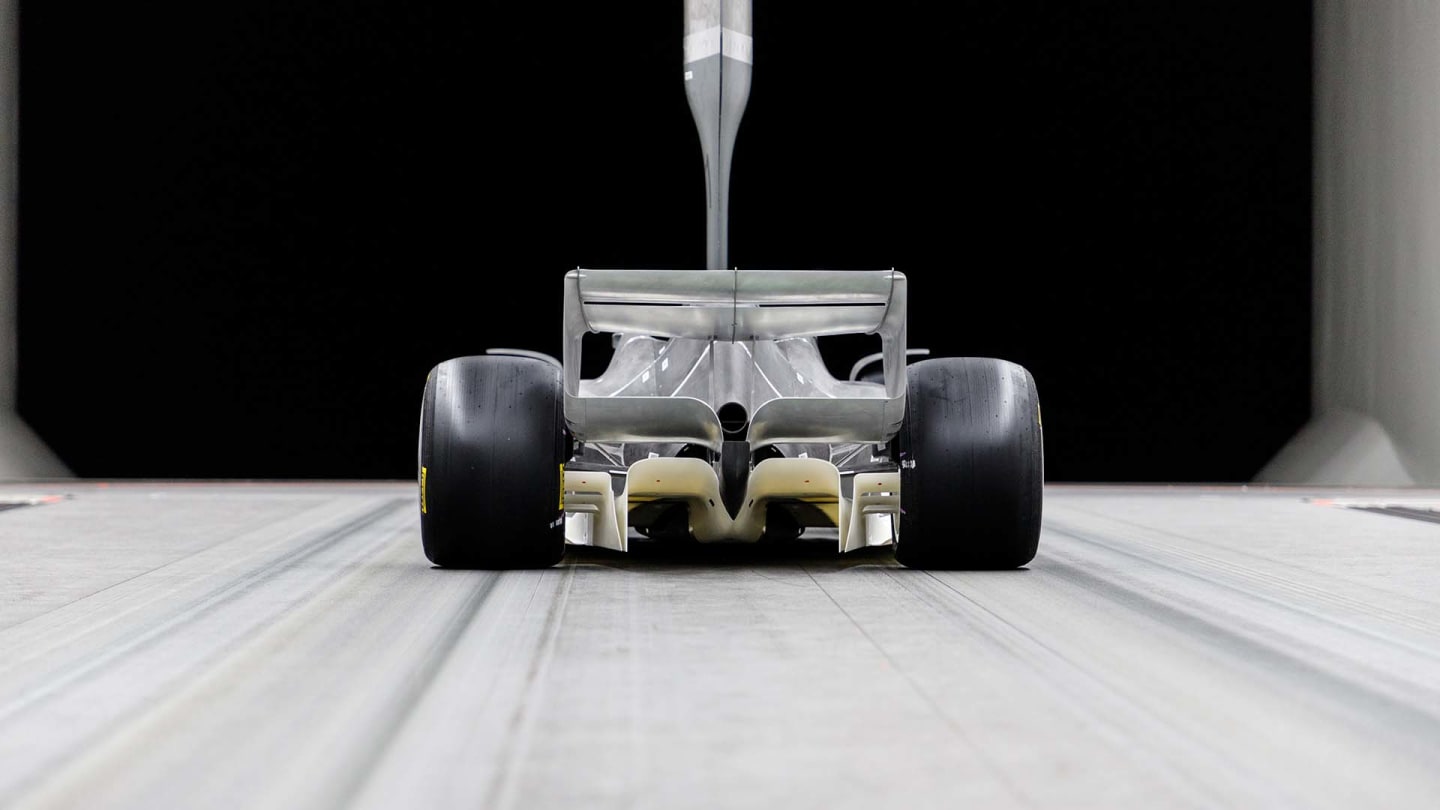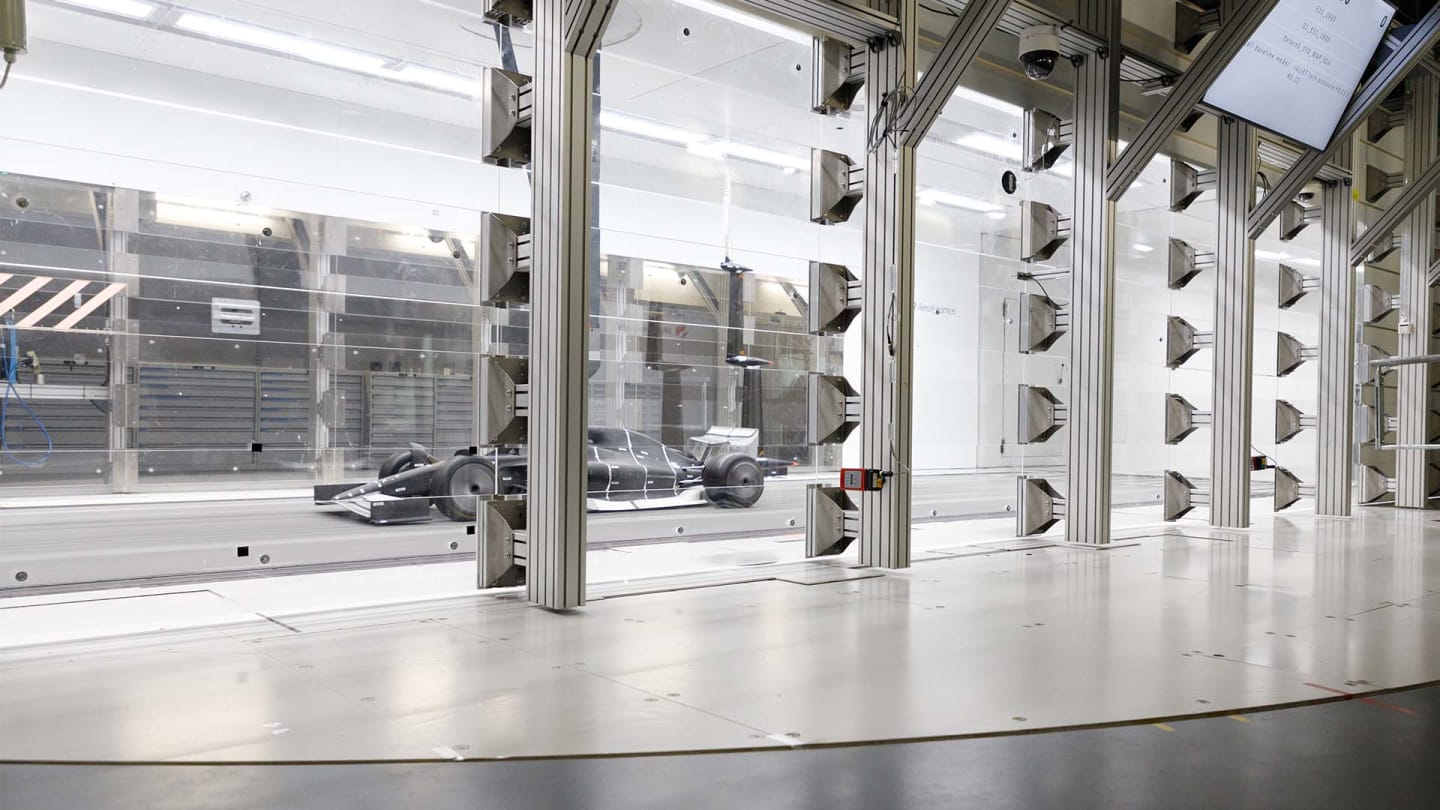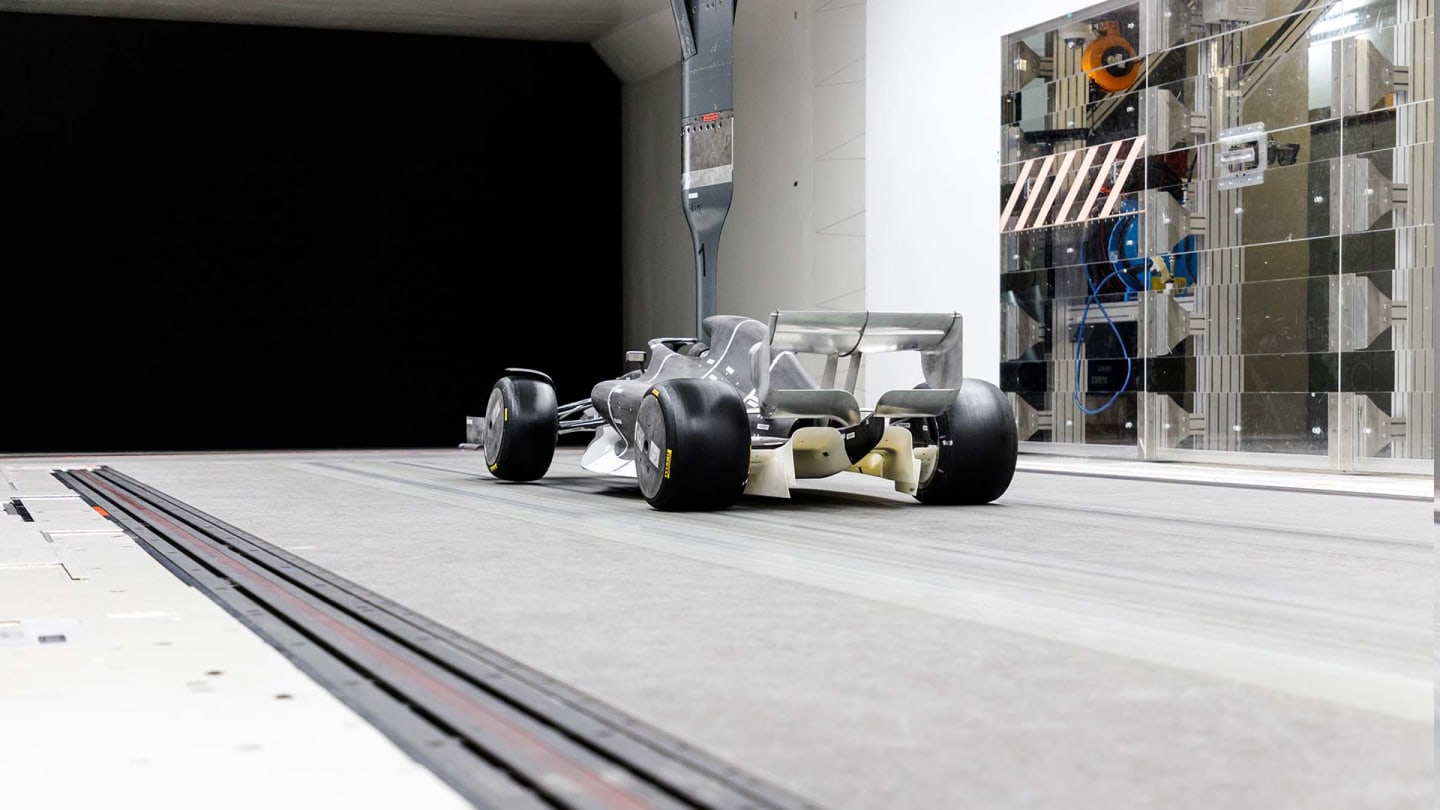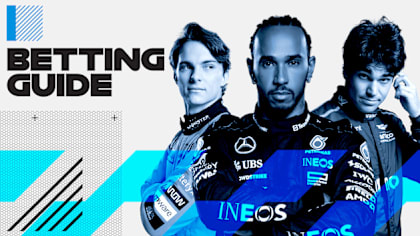
Feature
FIRST LOOK: Formula 1’s 2021 car in the wind tunnel
Share

We’ve had digital imagery of what the 2021 cars could look like. We’ve had artist impressions of what the 2021 cars could look like. Now we can bring you the exclusive first shots and video of an iteration of the 2021 car undergoing testing in the wind tunnel…
What has been happening?
Formula 1 and governing body, the FIA, have completed an unprecedented amount of research and development using CFD (Computational Fluid Dynamics) to make their vision for 2021 become reality. The next step was to confirm that data with tests in the wind tunnel.
So last month, ahead of the German Grand Prix, a model of the latest 2021 iteration was put in the Sauber wind tunnel under strict conditions of secrecy, for extensive testing. It came after a first run in January, where a 2018 60% model was used, and a second run in March, when an iteration of the 2021 car was tested with 13-inch wheels. While the general results will be shared with all teams, Sauber’s independent consultancy group ran the wind tunnel ensuring that their F1 team (Alfa Romeo Racing) gained no advantage.
Elements such as the sidepod areas and rear wing are expected to remain the same in the final iteration, but expect the front wing to evolve as they continue to develop it.
First look: 2021 car in the wind tunnel
In the video above, you get a rare glimpse into a wind tunnel with the 2021 50% scale model running for the first time with 18-inch tyres. There is a rake moving up and down behind the car to measure the airflow behind the car allowing F1 and the FIA to monitor the wake as they bid to improve a car’s ability to follow another.
“The wind tunnel testing we are doing is slightly different to what the teams might do,” says F1’s Chief Technical Officer Pat Symonds. “The teams concentrate solely on the forces on the car, through a variety of attitudes as they move the car around. While we naturally have an interest in what those forces are and particularly how those forces change as the car moves, we’re even more interested in what is happening to the turbulent air behind the car.
“For that reason, although we are doing most of our development in CFD, and that CFD is using some pretty advanced techniques which aren’t commonly used by the teams, we want to back up the virtual simulations with a physical simulation. We also chose to use a 50% model rather than a 60% model and we chose to run that model quite a long way forward in the wind tunnel, so this gave us the opportunity to best inspect the wake of the car.”
An advantage of using the Sauber wind tunnel, which is available commercially to hire, is that the Swiss operation have a very good automatic rake system. Nikolas Tombazis, the FIA’s Head of Single Seater Technical Matters, says the rake is made up of “pitot tubes with yaw sensitivity, so they can measure the direction, the pressure and the velocity of the flow and so on, mainly the velocity components and the pressure”.
He adds: “And in that way we can make sure that what the CFD is predicting is correct as the bulk of the work, 99% of the work, for these configurations has been done in CFD.
“The fundamental point of all of this is that we are trying to reduce the losses that the following car would face. The simplification of the leading car’s aerodynamics also helps for wake performance because on the one hand the front car doesn't have as many methods to control its wake. On the other hand the following car, not having all these little, very sensitive devices is less susceptible to disruption.”

Traditionally 100% scale cars are not used in a wind tunnel as their use was banned some years ago because of the huge cost of producing the model. Most teams have moved to using 60% models, but F1 and the FIA have opted to stick with a 50% scale.
“It takes up less room in the tunnel and therefore it allows us to look, in terms of car lengths, further behind,” says Symonds. “If you imagine you have a full size car in there, you could only look at a tenth of a car when it is behind so 50% is a good compromise in that we can still get a good level of detail on the model but we still have distance behind. It’s true teams have tended to go more to 60% these days. There are advantages to that, in modelling, but modern manufacturing techniques, particularly additive manufacturing and stuff like that allows you to make very accurate 50% models these days.”
You might be wondering why the research and development teams haven’t put a second car behind the front car to test the wake. Symonds says that is “not necessary”.
He adds: “We did do that in 2008, with the overtaking studies we did then for 2009, and for that, we had to go down to a quarter scale model which really is getting too small. That is what negates us doing it. Even in a big tunnel like Sauber’s, you could only really run one configuration with the cars really very close. What we’re trying to do is use CFD as our real simulation tool and this is just the correlation.”

What have been the results?
One of the chief targets of the 2021 rules is to see more overtaking. To do this, there is a push to find a way to allow the cars to follow each other more closely, which is why there has been so much research into reducing the wake.
So what have months and months of CFD testing and now a series of runs in the wind tunnel revealed? “That fundamentally the CFD was correct,” says Tombazis. “There have been no major surprises. So there is a 5-10% wake disruption, compared to the current levels of 50%, although it depends on the exact configuration you are testing and so on.”
Symonds is just as encouraged, going as far to say the results are “actually beyond what I thought we could achieve when we started the project”. He adds: “With the configurations we have got at the moment, the results are exceptional.”
There were research programmes ahead of the major regulation change for 2009 – when Brawn and Jenson Button won their fairytale world championships – and 2017 – when the aerodynamic regulations were overhauled. But nothing has been as sophisticated and thorough as the one currently taking place.
“Of course, this level of intensity, it falls far short of what the teams are able to do, in terms of sheer manpower you can throw at things, but we have a good – albeit small – experienced team of aerodynamicists, and we have access to an awful lot more computing power than any of the teams have as we’re not restricted in any way,” says Symonds.
“Through our Amazon Web Services (AWS) connections, we’re using their super computers and they are running an awful lot more computing cores. In CFD, we have to split the environment up into lots of little cells and we solve equations for each one of those cells. In a typical team environment, they are using 192 cores to solve 95 million cells.
“In our current configuration, we’re using 1152 cores and we’re solving up to 550 million cells. And next year we have potential to move up to 2300 cores. We have more than an order of magnitude more of computer power that we’re throwing at it than the teams might use, and that allows us to use the two-car simulation.”

What role have the teams played?
Formula 1 and the FIA are working hand in hand on the research and development to finalise the 2021 regulations in time for the October deadline – but that doesn’t mean they are excluding the teams. In fact, it’s quite the opposite. Teams have been invited to help with the gathering of data and development process, with the FIA allowing them to do the testing outside the number of hours they are allocated for their current projects. Those who have the resource and capability to do that have done so. Those who don’t still get the information.
“The teams have been very good, the teams that have had the resources to do it, have worked on a number of projects for us, and they are all fully informed of what is going on,” says Symonds. “We have meetings every few months, we send our geometry to them, they then run that in their own CFD environments and they feedback results to us. They have been as involved as they want to be. Some can’t put the resources in. All teams results are shared until we get to the cut-off point, where from that point on they have to operate within their declared rules.”
READ MORE - The next steps: How the FIA and F1 will break the rules
YOU MIGHT ALSO LIKE
News How to stream the Formula 1 2024 Qatar Grand Prix on F1 TV Pro
News Formula 1 expands Sustainable Aviation Fuel investment through new Qatar Airways programme
Feature IT’S RACE WEEK: 5 storylines we’re excited about ahead of the 2024 Qatar Grand Prix
Feature BETTING GUIDE: Who are the favourites as F1 heads to Qatar for the penultimate round of the season?

)


